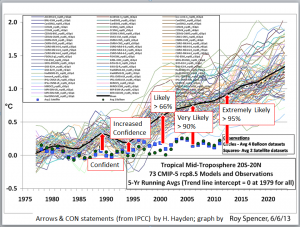Once again, separate federal courts have ruled against the EPA in two cases with important economic implications.
In March, the 8th U.S. Circuit Court of Appeals, the court ruled in favor of the Iowa League of Cities, which argued that the agency was pushing a new interpretation of its wastewater treatment rules in letters sent to some cities in Iowa in order to prohibit selected internal techniques for treating wastewater during high-flow storm events. The EPA this week officially decided not to challenge the ruling.
Waste treatment plants use secondary treatment of sewage which relies on biological organisms to remove microbial pathogens and other pollutants, but those organisms are sensitive to flows and can be washed away during storms. In this case, some plant operators in Iowa had begun to route some flows around secondary treatment and blend them back into the treated flows, while keeping the final, blended discharge within the end-of-pipe pollution limits.
The EPA objected and sent a letters to these operators stating that blending was not allowed. Thus, the lawsuit. The ruling has potentially wide-reaching implications both for the extent of EPA’s authority under the Clean Water Act and for how agencies can communicate with regulated entities.
Basically, the ruling says what goes on within the plant is not within the EPA’s purview as long as the effluents leaving the plant meet pollution limits. The NCPA has long argued that the EPA shouldn’t focus on process or paperwork but rather on results in terms of pollution reduction. This court seems to get it. As importantly, it the ruling makes clear that if the EPA wants to regulate an activity, it must go through the rule making process, not simply give opinions – until the rules change, the EPA can’t contradict its own rules.
Whether this ruling will be applied by the EPA outside of the 8th Circuit Court’s jurisdiction and whether it applies to other entities (beside municipal waste water treatment facilities) also regulated under the clean water act remains to be seen, but the ruling has potentially far reaching consequences.
In a second case, the rogue EPA’s attempts to act outside of their authority was also struck down. For years the EPA has been trying to figure out a way to limit farm runoff. There’s just one problem, while Congress has delegated to the EPA the power to regulate large water polluters, it has never granted the EPA’s wish to regulate farmers or individual homeowners – factories and power plants, not farms.
Alt filed the lawsuit in June 2012 after EPA issued a compliance order for stormwater runoff that it determined to be coming from her CAFO in West Virginia. EPA said dust and manure from the operation’s eight poultry confinement houses had settled on the farmyard and had been exposed to precipitation, leading to runoff into local waterways.
The agency told Alt she must obtain a Clean Water Act permit for the discharges or face penalties of up to $37,500 a day.
Alt argued she maintained best-management practices and took steps to reduce the amount of manure and litter that would be exposed to rain and snow. She argued the operation didn’t require a Clean Water Act permit for the runoff because the law explicitly exempts agricultural stormwater discharge from regulation.
But EPA said the stormwater exemption did not apply to Alt’s operation, arguing that the exemption, applied only to areas where manure, litter or process wastewater has specifically been applied in accordance with nutrient management practices, not to areas where they may have inadvertently accumulated during livestock operations.
Judge John Bailey in the U.S. District Court for the Northern District of West Virginia found that discharges from Lois Alt’s farm in Old Fields, W.Va., were covered by a Clean Water Act exemption for agricultural stormwater.
In Baily’s ruling he wrote, “Common sense and plain English lead to the inescapable conclusion that Ms. Alt’s poultry operation is ‘agricultural’ in nature and that the precipitation-caused runoff from her farmyard is ‘stormwater.'” Baily further noted that courts have long upheld a broader definition of agricultural stormwater discharge than contained in EPA’s 2003 CAFO rule and in its arguments in the Alt case. EPA’s argument that the exemption applies only to land application areas is contrary to previous court rulings, he said. The only requirement is that the exempt discharge must be agriculture related.”
The case, Alt v. EPA, had been closely watched by both agricultural interests who feared that a favorable ruling for EPA would open concentrated animal feeding operations, or CAFOs, to permitting requirements for stormwater discharges. The West Virginia Farm Bureau and the American Farm Bureau Federation joined the lawsuit on behalf of Alt. In response to the ruling the Farm Bureau President said, “The outcome of this case will benefit thousands of livestock and poultry farmers who run their operations responsibly and who should not have to get a federal permit for ordinary rainwater from their farmyards.”
These rulings reinforce the fact that the EPA, no less than any other part of the government, is constrained the rule of law, no regulatory or executive whim. Though I would argue that government agencies have too much power as it is, it should be clear that they don’t have power not granted to them by Congress, and in these cases, so the courts have ruled.
